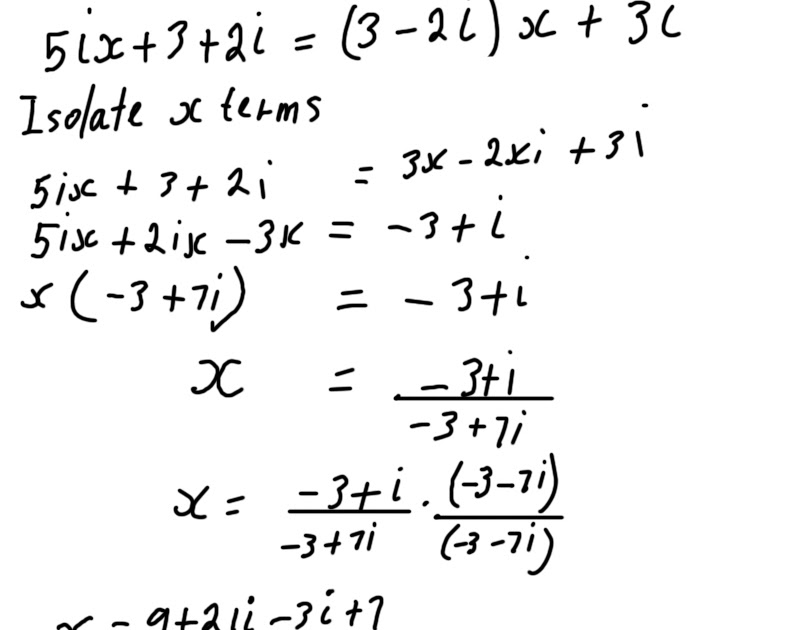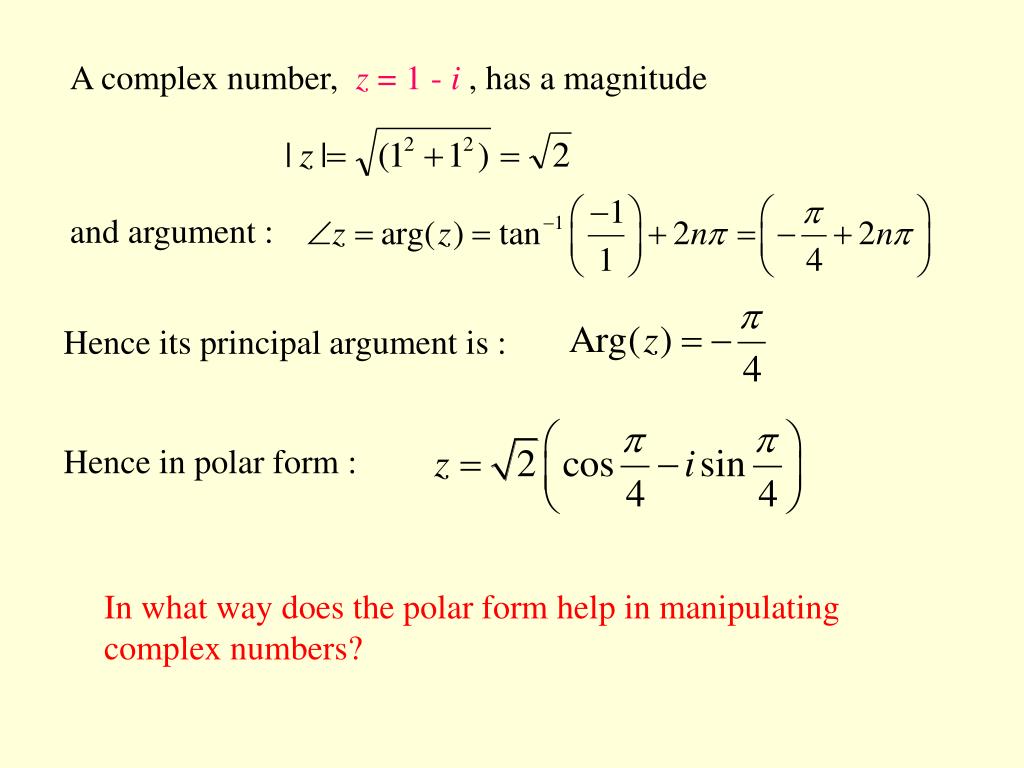

Our calculator can power any complex number to an integer (positive, negative), real, or even complex number. We calculate all complex roots from any number - even in expressions: Our calculator is on edge because the square root is not a well-defined function on a complex number. If you want to find out the possible values, the easiest way is to go with De Moivre's formula. Because of the fundamental theorem of algebra, you will always have two different square roots for a given number. Square root of complex number (a+bi) is z, if z 2 = (a+bi). The calculator uses the Pythagorean theorem to find this distance. The absolute value or modulus is the distance of the image of a complex number from the origin in the plane. If the denominator is c+d i, to make it without i (or make it real), multiply with conjugate c-d i:Ĭ + d i a + b i = ( c + d i ) ( c − d i ) ( a + b i ) ( c − d i ) = c 2 + d 2 a c + b d + i ( b c − a d ) = c 2 + d 2 a c + b d + c 2 + d 2 b c − a d i This approach avoids imaginary unit i from the denominator. The division of two complex numbers can be accomplished by multiplying the numerator and denominator by the denominator's complex conjugate. This is equal to use rule: (a+b i)(c+d i) = (ac-bd) + (ad+bc) i To multiply two complex numbers, use distributive law, avoid binomials, and apply i 2 = -1. This is equal to use rule: (a+b i)+(c+d i) = (a-c) + (b-d) i This is equal to use rule: (a+b i)+(c+d i) = (a+c) + (b+d) iĪgain very simple, subtract the real parts and subtract the imaginary parts (with i):

Very simple, add up the real parts (without i) and add up the imaginary parts (with i):

Many operations are the same as operations with two-dimensional vectors. And use definition i 2 = -1 to simplify complex expressions. We hope that working with the complex number is quite easy because you can work with imaginary unit i as a variable. Complex numbers in the angle notation or phasor ( polar coordinates r, θ) may you write as rLθ where r is magnitude/amplitude/radius, and θ is the angle (phase) in degrees, for example, 5L65 which is the same as 5*cis(65°).Įxample of multiplication of two imaginary numbers in the angle/polar/phasor notation: 10L45 * 3L90.įor use in education (for example, calculations of alternating currents at high school), you need a quick and precise complex number calculator.


 0 kommentar(er)
0 kommentar(er)
